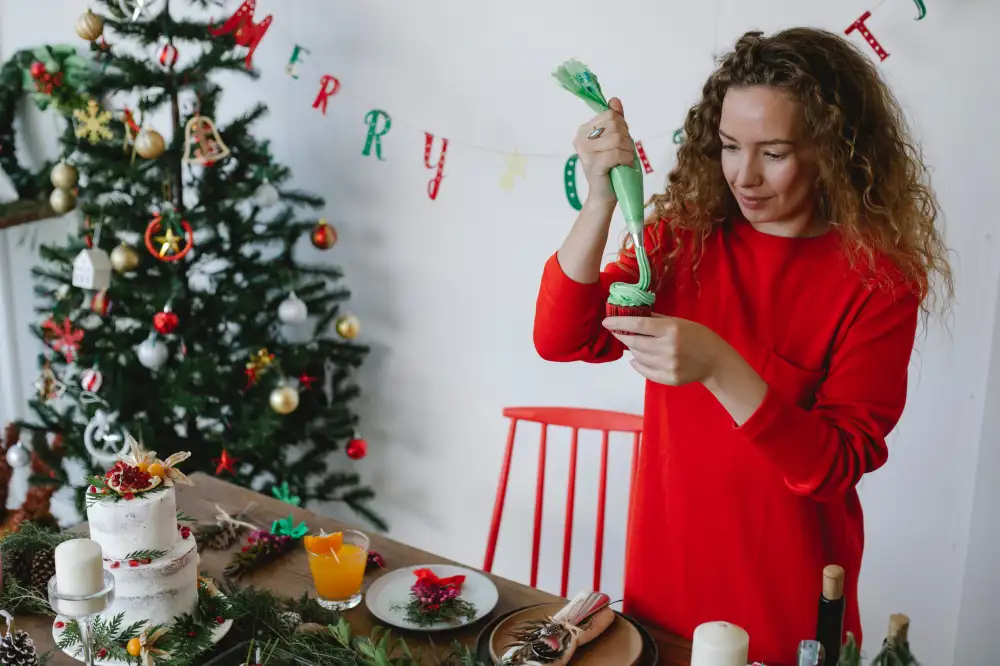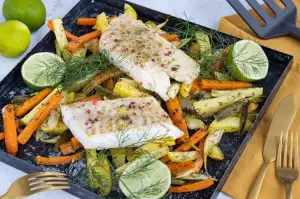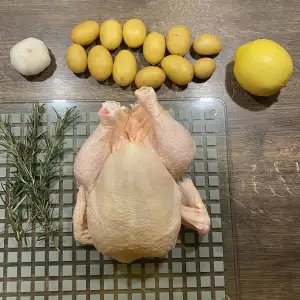Whip Up a Delectable Batch of Homemade Buttercream Frosting: A Step-by-Step Guide

Buttercream frosting is a rich and creamy topping that adds a burst of flavor to any baked treat. Whether you're decorating a cake, cupcakes, or cookies, homemade buttercream frosting can take your creations to the next level. With its smooth texture and luscious taste, it's no wonder why buttercream is a favorite among bakers and dessert enthusiasts alike. In this step-by-step guide, we will explore how to whip up a delectable batch of homemade buttercream frosting that will elevate your desserts from ordinary to extraordinary. So grab your mixing bowl and let's get started on this sweet culinary adventure!
Gathering the Ingredients
Before you embark on your buttercream frosting adventure, it's essential to gather all the necessary ingredients. Here's what you'll need:
1. Butter: Make sure you have unsalted butter at room temperature. It should be soft enough to easily mix but not melted.
2. Powdered Sugar: This is the main sweetener in buttercream frosting. Sift the powdered sugar before using to remove any lumps.
3. Flavorings: Vanilla extract is a classic choice, but feel free to experiment with other extracts like almond or lemon for a unique twist.
4. Milk or Heavy Cream: These liquids help achieve the desired consistency of your frosting. Use milk for a lighter texture or heavy cream for a richer one.
5. Food Coloring (optional): If you want to add some color to your frosting, have food coloring ready in your preferred shades.
By having all these ingredients prepared and within reach, you'll be ready to whip up a delectable batch of homemade buttercream frosting in no time!
Softening the Butter
Before you can start making your homemade buttercream frosting, it's important to ensure that your butter is at the right consistency. Softened butter is easier to mix and will result in a smoother and creamier frosting.
To soften the butter, take it out of the refrigerator and let it sit at room temperature for about 30 minutes. The goal is to have the butter slightly soft but still cool to the touch. You don't want it to be melted or too warm as this can affect the texture of your frosting.
If you're short on time, there are a few tricks you can try to speed up the softening process. One option is to cut the butter into small cubes, which will help it soften more quickly. Another method is to place the wrapped stick of butter between two sheets of parchment paper and gently pound it with a rolling pin until it becomes pliable.
Remember, patience is key when softening butter for buttercream frosting. Rushing this step may result in lumpy or greasy frosting, so take your time and allow the butter to reach the perfect consistency before moving on to the next step.
Adding the Sugar
Once your butter is softened, it's time to add the sugar. For a basic buttercream frosting, you will need about 2 cups of powdered sugar. Sift the sugar before adding it to ensure a smooth texture.
Start by adding a small amount of sugar to the butter and mix it on low speed until combined. Gradually add more sugar, about 1/2 cup at a time, and continue mixing until all the sugar is incorporated.
As you add the sugar, you'll notice that the mixture becomes thicker and stiffer. This is what gives buttercream its structure and allows it to hold its shape when piped or spread onto cakes.
If you prefer a sweeter frosting, you can add more powdered sugar to taste. Keep in mind that too much sugar can make the frosting overly sweet, so be mindful of your personal preference.
Continue mixing on medium speed for about 3-5 minutes until the frosting is light and fluffy. This will help incorporate air into the mixture and give it a lighter texture.
Once all the sugar has been added and mixed thoroughly, your buttercream frosting is ready for the next step - incorporating flavorings.
Incorporating the Flavorings
Now that you have achieved a smooth and creamy base for your buttercream frosting, it's time to add some delicious flavorings. This is where you can get creative and customize your frosting to suit your taste preferences.
Start by adding a teaspoon of vanilla extract for a classic and versatile flavor. If you want something more adventurous, try using almond or mint extract instead. These extracts will give your buttercream a unique twist that will surely impress.
For those who enjoy fruity flavors, consider incorporating some fruit puree or zest into your frosting. Whether it's fresh strawberries, lemon zest, or even raspberry puree, these additions will infuse your buttercream with a burst of fruity goodness.
If you're feeling indulgent, why not add some melted chocolate or cocoa powder? This will give your buttercream a rich and decadent taste that chocolate lovers won't be able to resist.
Once you've chosen your flavorings, gently fold them into the buttercream using a spatula or whisk. Be careful not to overmix as this can cause the frosting to become too runny. Aim for an even distribution of flavor throughout the frosting.
Remember, the amount of flavoring you add will depend on personal preference. Start with small amounts and gradually increase until you achieve the desired taste.
Incorporating flavorings into your homemade buttercream frosting is an exciting step that allows you to experiment with different tastes and create unique combinations. So go ahead and let your creativity shine through as you whip up a batch of delectable flavored buttercream!
Achieving the Desired Consistency
Once you have added the sugar and flavorings to the softened butter, it's time to focus on achieving the perfect consistency for your buttercream frosting. The consistency of the frosting will determine how easy it is to spread or pipe onto your cakes or cupcakes.
To achieve a smooth and creamy texture, start by beating the buttercream on low speed for a few minutes. This will help incorporate all the ingredients together. If you find that the frosting is too thick, you can add a tablespoon of milk or cream at a time until you reach your desired consistency. On the other hand, if the frosting is too thin, simply add more powdered sugar gradually until it thickens up.
It's important to note that achieving the right consistency may require some trial and error. Start with small adjustments and continue to mix until you are satisfied with the texture. Remember, you can always add more liquid or powdered sugar as needed.
If you plan on using different piping techniques for decorating, make sure to adjust the consistency accordingly. For intricate designs, a stiffer buttercream works best as it holds its shape well. For smoother finishes or spreading onto cakes, a softer consistency will give you a more even layer.
Take your time during this step and don't rush through it. The key is to achieve a balance between spreadability and stability so that your buttercream holds its shape but remains easy to work with.
By following these steps and adjusting the consistency as needed, you'll be able to create a delectable batch of homemade buttercream frosting that is not only delicious but also visually appealing when applied to your baked goods.
Decorating with Buttercream Frosting
Decorating with Buttercream Frosting is where the magic happens. Once you have whipped up a batch of smooth and creamy buttercream, it's time to let your creativity shine. Whether you're frosting a cake, cupcakes, or cookies, there are endless possibilities for beautiful designs.
Start by filling a piping bag fitted with your desired tip. For simple yet elegant decorations, try using a star tip to create rosettes or swirls on top of cupcakes. You can also use a round tip to pipe dots or lines for added texture.
If you're feeling more adventurous, experiment with different tips to create unique shapes and patterns. Try using a petal tip to make delicate flower petals or a leaf tip for realistic foliage. The key is to practice and have fun with it!
To add even more flair to your creations, consider coloring the buttercream frosting. Gel food coloring works best as it won't alter the consistency of the frosting. Divide the frosting into separate bowls and add a small amount of gel food coloring to each bowl until you achieve your desired shades.
Once colored, you can use multiple piping bags filled with different colors to create stunning multi-colored designs. Or use an offset spatula to spread the frosting smoothly over cakes and then use additional piping bags for intricate details.
Don't forget about adding edible decorations such as sprinkles, edible pearls, or chocolate shavings for an extra touch of elegance. These small additions can take your buttercream creations from ordinary to extraordinary.
Remember that practice makes perfect when it comes to decorating with buttercream frosting. Don't be discouraged if your first attempts don't turn out exactly as planned. With time and patience, you'll develop your own unique style and techniques.
So go ahead and unleash your inner artist! Decorating with buttercream frosting allows you to transform simple baked goods into stunning masterpieces that will impress both friends and family alike. Enjoy the process and savor every delicious bite of your beautifully decorated treats.
Tips and Tricks for Perfect Buttercream
1. Use unsalted butter for a smoother and creamier texture.
2. Make sure the butter is at room temperature before starting to whip it.
3. Gradually add the powdered sugar to avoid lumps in the frosting.
4. Sift the powdered sugar before adding it to ensure a smooth consistency.
5. Add flavorings such as vanilla extract or cocoa powder slowly, tasting as you go, to achieve the desired taste.
6. For a lighter texture, whip the buttercream frosting for a few extra minutes.
7. If the frosting becomes too thick, add a tablespoon of milk at a time until it reaches the desired consistency.
8. To prevent air bubbles, use a spatula or paddle attachment when mixing instead of a whisk attachment.
9. Chill the frosting in the refrigerator for 15-20 minutes before piping or spreading onto cakes or cupcakes.
10. Experiment with different piping tips and techniques to create beautiful designs on your desserts.
By following these tips and tricks, you'll be able to create perfect homemade buttercream frosting every time!
Now that you have mastered the art of making homemade buttercream frosting, it's time to indulge in its creamy goodness. Whether you are using it to frost a cake, pipe onto cupcakes, or simply enjoy a spoonful on its own, your taste buds are in for a treat.
The velvety texture and rich flavor of homemade buttercream frosting will elevate any dessert to new heights. Its versatility allows you to experiment with different flavors and decorations, making each creation unique and personalized.
So go ahead, whip up a batch of this delectable frosting and let your imagination run wild. Get creative with colors, shapes, and designs as you adorn your baked goods with this heavenly delight. The possibilities are endless!
Remember, practice makes perfect when it comes to buttercream frosting. Don't be discouraged if your first attempt isn't flawless. With time and experience, you will master the technique and achieve the desired consistency every time.
Indulge in the satisfaction of creating something delicious from scratch. Share your creations with family and friends, and watch their faces light up as they savor the incredible taste of your homemade buttercream frosting.
So what are you waiting for? Grab your mixing bowl and get ready to embark on a culinary adventure filled with sweetness and joy. Enjoy every moment of creating and savoring your homemade buttercream frosting!
Published: 26. 01. 2024
Category: Recipes



